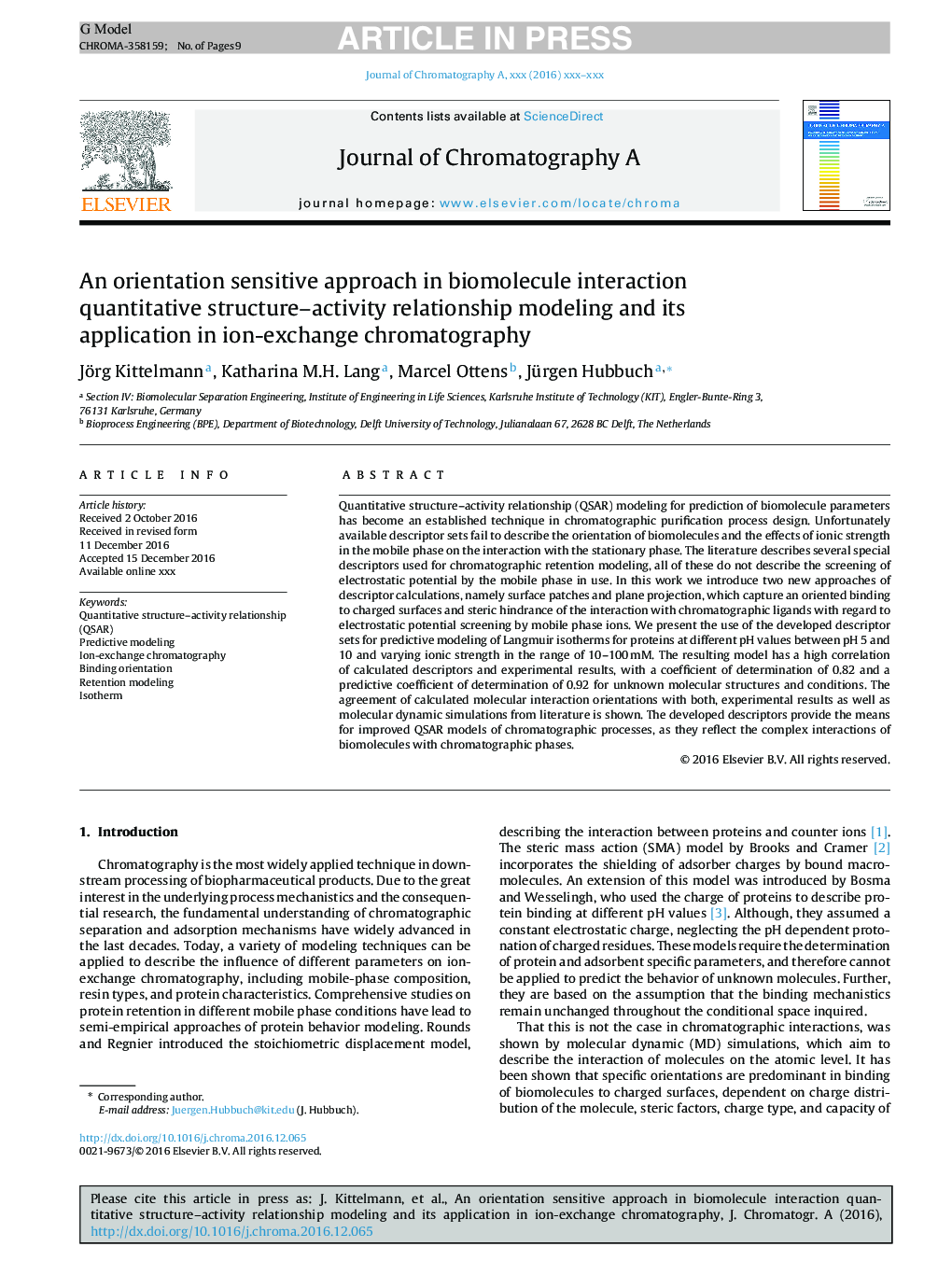| Article ID | Journal | Published Year | Pages | File Type |
|---|---|---|---|---|
| 5135422 | Journal of Chromatography A | 2017 | 9 Pages |
Abstract
Quantitative structure-activity relationship (QSAR) modeling for prediction of biomolecule parameters has become an established technique in chromatographic purification process design. Unfortunately available descriptor sets fail to describe the orientation of biomolecules and the effects of ionic strength in the mobile phase on the interaction with the stationary phase. The literature describes several special descriptors used for chromatographic retention modeling, all of these do not describe the screening of electrostatic potential by the mobile phase in use. In this work we introduce two new approaches of descriptor calculations, namely surface patches and plane projection, which capture an oriented binding to charged surfaces and steric hindrance of the interaction with chromatographic ligands with regard to electrostatic potential screening by mobile phase ions. We present the use of the developed descriptor sets for predictive modeling of Langmuir isotherms for proteins at different pH values between pH 5 and 10 and varying ionic strength in the range of 10-100Â mM. The resulting model has a high correlation of calculated descriptors and experimental results, with a coefficient of determination of 0.82 and a predictive coefficient of determination of 0.92 for unknown molecular structures and conditions. The agreement of calculated molecular interaction orientations with both, experimental results as well as molecular dynamic simulations from literature is shown. The developed descriptors provide the means for improved QSAR models of chromatographic processes, as they reflect the complex interactions of biomolecules with chromatographic phases.
Keywords
Related Topics
Physical Sciences and Engineering
Chemistry
Analytical Chemistry
Authors
Jörg Kittelmann, Katharina M.H. Lang, Marcel Ottens, Jürgen Hubbuch,
